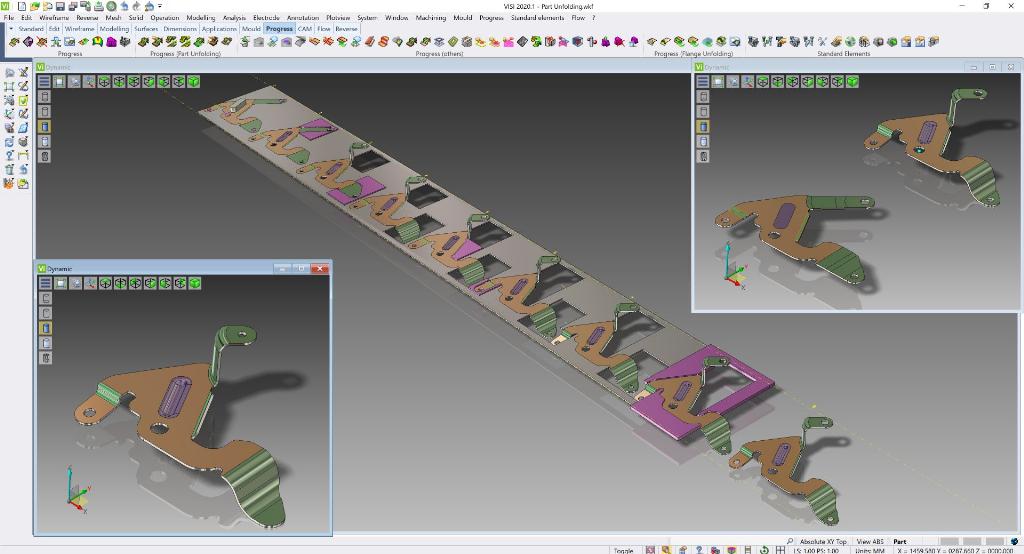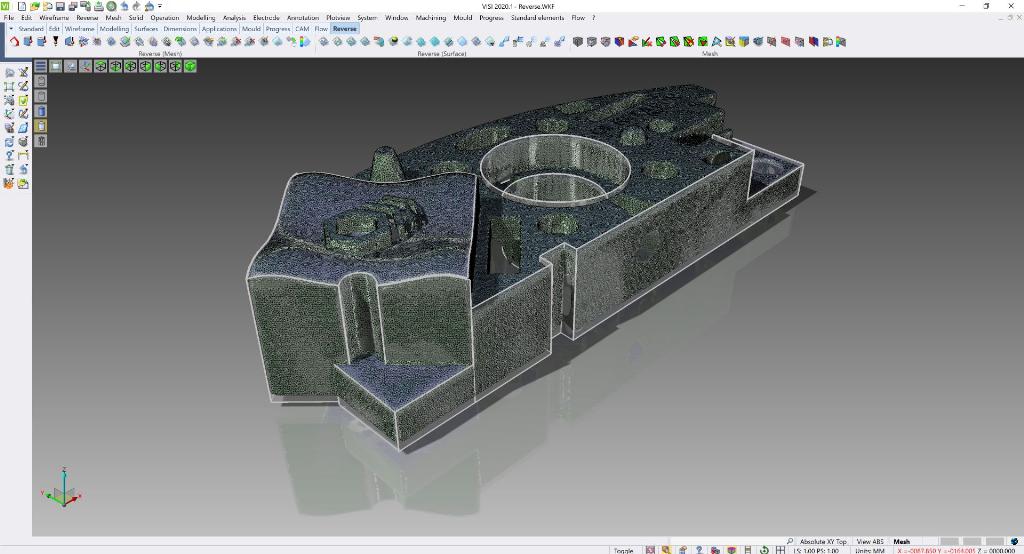Improving progressive die design

The latest release of Visi CAD/CAM mould and die software from Hexagon Manufacturing Software enhances the progressive die design processes, along with enhancements for the Reverse module.
When it comes to progressive design, upgrades to the new part unfolding technology provide the ability to work directly on the original solid model, support blanking functionality, and manage parts with non-linear bends.
The sheet metal part recognition provides an improved graphical representation of the part, analysed by identifying bends, planar faces and features. Different face types can be set, to be considered for the blanking process. The new technology allows linear blank unfolding and flange unfolding to be combined into a single functionality.
With linear bends, the system will unfold using the linear bend unfolding technology, while flange areas unfold using the FEA unfolding solution. And coining faces can also be unfolded as part of the same process.
Visi product manager Marco Cafasso says the major advantage of the new technology is the associativity provided with the original model during the die design process.

“It allows the original part to be modified and changes to be automatically propagated on the banked part,” he explains. “This new feature allows all the linked parts to be rebuilt in reference to a modification done to the original part. This is extremely useful because it updates all the studied parts in a single click, and is a major time saving in the design and modification phase of a progressive die.”
Visi 2020.1 also provides a direct interface to Stampack Xpress, for die simulation.
Other upgrades focus on enhanced reverse and casting. The latest ‘Reverse’ module has been enhanced with additional functionalities for both of these processes, including new features to support the scanning to surfaces generation.
Mr Cafasso says features such as radius generation from mesh, plane generation, adapt mesh on boundary, and sectional curves on mesh, provide greater benefit for the reverse process from point scanning to solid model generation.
“A new ‘Best Fit’ feature aligns a stock model to the final solid model by setting tolerances on different faces,” he explains. “This is extremely useful for the casting market as it allows the cast model to be scanned, achieving a best fit alignment with the final geometry, producing an optimised toolpath with reduced machining time.”

The stock model can then also be used for machining simulation purposes.
The ‘Compare’ feature on the latest release has been improved to provide an enhanced graphical evaluation of the results and to display distances between the scanned model and the final solid model.
“The enhancements achieved provide quality improvements to both processes as well as time saving from the scanning to the manufacturing process,” Mr Cafasso says.
For mould and tool design, a new body to mould functionality has been introduced which provides a quick solution to define the correct position and orientation of a plastic part on the tool. The feature allows the transformation of the model from the ‘Car in line’ position to the mould position, and to apply the required shrinkage value.
“The original position of the model can also be restored if modifications are required for the moulding of the part. This is extremely useful especially, but not only, for the automotive market, as it provides a time saving for the mould design process.”
When it comes to 5-axis deburring, Mr Cafasso says the new automatic deburring function reduces the set-up time for that vital aspect of the overall process.
“Creating CAM operations on any arbitrary part geometry is relatively easy nowadays as parts can be virtually designed, created and produced,” he comments. “However, once CAM is finished there is one last operation that is not yet automated, usually done manually after machining.
“Burrs occur on all parts that have straight edges or non-tangent outer surface topologies. They appear when the tool is chipping the metal off that edge. It’s an unwanted situation because it can destroy the functionality of the part and can even be a danger to the worker as it’s razor sharp, so, most of the time it’s essential to remove it.”

The purpose of Visi’s deburring strategy is to provide an automatic finishing to the machined part’s sharp edges – an important phase of the manufacturing process for parts with no tangent surfaces. It creates a highly automated toolpath to deburr the sharp edges of a workpiece with a spherical tool. The tool is positioned in the bi vector of the automatically detected sharp edges. Automatic tilting and linking is then applied to avoid collisions.
“As the whole process is highly automated, this machining strategy significantly reduces deburring set-up time,” Mr Cafasso notes.
Also, the 5-axis Autotilting capability has been enhanced in Visi 2020.1, with new smoothing options, based on a more sophisticated interpolation algorithm. This optimises the contour while keeping the tilt angles in a limited range resulting in a more fluent movement of the machine while milling the part.
Finally, in the latest release of Visi mould and die software, new graphical representations assist in validating the model for manufacturing purposes. The ‘Undercut and Accessibility’ shading also identifies undercut areas during the design and modelling phases.
“The advantage provided is the ability to validate a model for manufacturing purposes at an early stage in the design to manufacturing process,” Mr Cafasso concludes.
Visi www.visicadcam.com














